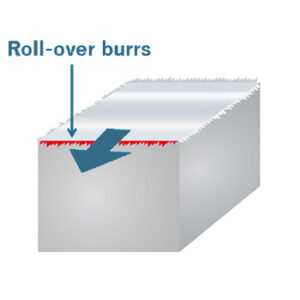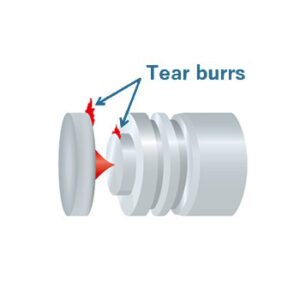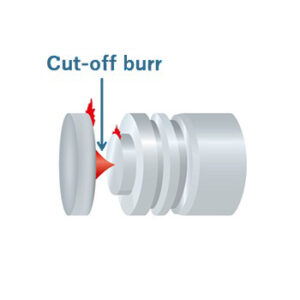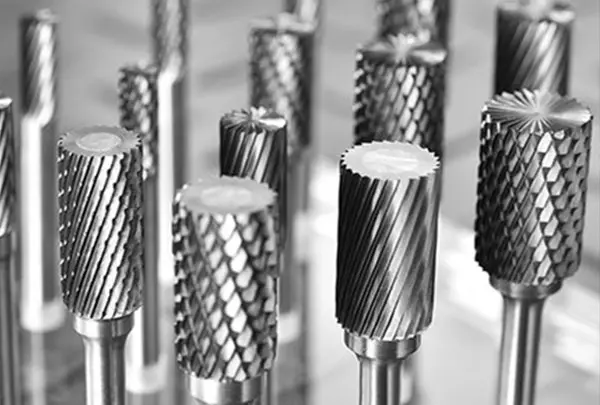In the world of machining and manufacturing, burrs are unwanted raised edges or small pieces of material remaining attached after a part is modified. Understanding the different types of burrs is crucial for achieving a smooth, professional finish. This post delves into four common types of burrs: Poisson burrs, rollover burrs, tear burrs, and cut-off burrs.
 1. Poisson Burrs
1. Poisson Burrs
Description: Poisson burrs form due to the material’s lateral deformation during machining. Named after the Poisson effect, which describes the tendency of materials to expand perpendicularly to the direction of compression, these burrs are common in ductile materials.
Characteristics:
- Appearance: Rounded edges along the sides of the cut.
- Formation: Typically occurs in soft metals like aluminum.
Prevention:
- Use sharp tools to minimize material deformation.
- Optimize cutting parameters to reduce lateral expansion.
 2. Rollover Burrs
2. Rollover Burrs
Description: Rollover burrs are one of the most common burr types, forming when the material rolls over itself at the exit point of a cut. These burrs often occur during drilling, milling, and turning operations.
Characteristics:
- Appearance: Curled or folded edges at the exit of a cut.
- Formation: Seen in both ductile and brittle materials.
Prevention:
- Utilize proper cutting techniques and sharp tools.
- Adjust feed rates and cutting speeds.
 3. Tear Burrs
3. Tear Burrs
Description: Tear burrs occur when the material tears rather than shears cleanly during the cutting process. This often happens in brittle materials that are prone to cracking.
Characteristics:
- Appearance: Jagged, irregular edges.
- Formation: Common in materials like cast iron and some plastics.
Prevention:
- Ensure tools are sharp and appropriate for the material.
- Reduce cutting speed to minimize tearing.
 4. Cut-off Burrs
4. Cut-off Burrs
Description: Cut-off burrs form at the end of a cut when a part is separated from a larger piece. These burrs can be substantial and often require significant post-processing.
Characteristics:
- Appearance: Large, rough edges where the part was cut off.
- Formation: Occurs in both metal and plastic cutting operations.
Prevention:
- Use precise cutting tools designed to minimize burr formation.
- Implement secondary processes like deburring tools or machines.
Conclusion:
Identifying and understanding different types of burrs—Poisson, rollover, tear, and cut-off—is essential for improving the quality of your machined parts. Employing the right techniques and tools can significantly reduce the presence of these unwanted materials, leading to smoother finishes and more professional results. By addressing burr formation at the source, you can enhance both the efficiency and quality of your machining processes.



